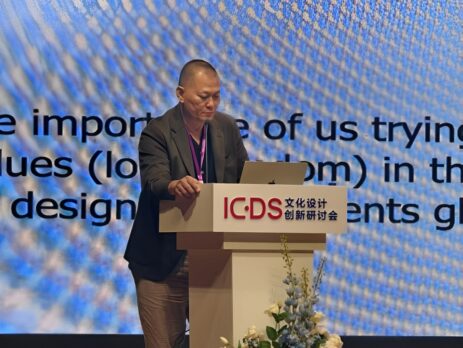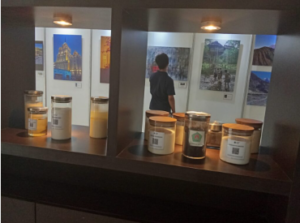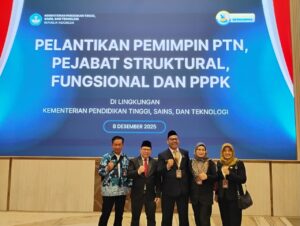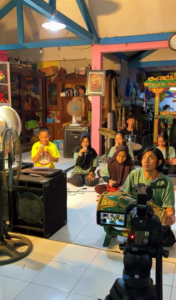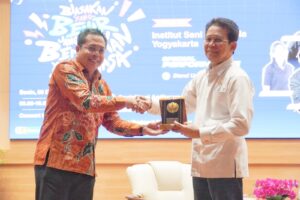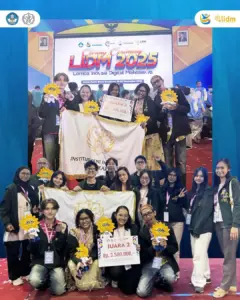Dr. Yulriawan Dafri, M.Hum., lecturer at the Faculty of Fine Arts and Design (FSRD) ISI Yogyakarta became one of the speakers at the international symposium held by the Jilin Anamation Institute, in Jilin Changchun China on April 17-20, 2025. The symposium with the big theme is "Cultural Innovation Design" involving various countries in Asia, such as Japan, Korea, Hong Kong, New Zeland and Southeast Asia including Malaysia and Indonesia.
In the first talk delivered by the committee chairman, it was mentioned that Design is currently at a crucial junction in the process of convergence and transition between Eastern and Western cultures, with the global design sector undergoing unprecedented transformation and opportunities. Along with the increasing influence of Asian design, its role on the international stage is increasingly prominent, displaying unique cultural charm and great innovative potential. Design culture is not only a fusion of aesthetics and functionality, but also an important manifestation of a nation's competitiveness, and a key driver in cultural exchange and economic development.
In this context, the value of design culture is becoming increasingly prominent. Through innovative design, countries can enhance their international image and soft power, and promote sustainable economic development. Jilin Animation Institute, with sensitivity to the dynamics of the times, specially organizes Innovative Culture Design Symposium This seminar aims to bring together design experts and academics from various Asian countries to jointly explore the integration of culture and design, the art of designing cultural products, creative fusion in cross-cultural design, and cultural expression in local design. Through this seminar, it is hoped to encourage innovation and development of design culture, strengthen cultural exchange and cooperation, and provide new perspectives and directions for the future of the design world.
In this symposium there are 4 modules offered to be discussed in this joint forum, namely 1. Cultural Roots: The Integration of Design and Culture (Culture and Design) In the era of globalization, the relationship between design and culture has become increasingly close, with culture serving as the source of inspiration and the soul of design. The "Cultural Roots" module explores the deep integration between design and culture in various cultural backgrounds, encouraging design to absorb cultural values to produce more meaningful and profound work. 2. Masterpiece: Art of Cultural Product Design (Cultural Product Design) Cultural products are both containers of culture and concrete manifestations of the art of design. The "Masterpiece" module explores how to combine cultural elements with modern design concepts to create cultural products that are full of cultural meaning and contemporary aesthetics. The main focus of this module is on innovation and practice in cultural product design, as well as how to give new vitality to cultural products through the art of design. 3. The Beauty of Integration: Creative Fusion in Cross-Cultural Design (Cross-Cultural Design) In the context of globalization, cross-cultural design is becoming a very important topic. The "Beauty of Integration" module examines the mutual influence and integration of design in various cultural settings, seeking beauty and creativity in the fusion of cultures. Cross-cultural design is not simply the overlapping of different cultural elements, but a deep dialog and integration between cultures through design. 4. Heritage Path: Cultural Expressions in Local Design. Local design is an important way to honor local culture and preserve cultural heritage. The "Heritage Pathways" module examines how to inherit and express the uniqueness of local culture through design. Local design emphasizes respecting and understanding local culture, and expressing the uniqueness and cultural meaning of a region through the language of design. Experts will share successful cases and design experiences, discuss how to express the meaning and characteristics of local culture in design, and learn innovative methods and practical paths in local design. Designers will learn how to honor and inherit local culture in design, create design works that have regional characteristics and cultural depth, and encourage the preservation and inheritance of local culture. On this occasion, Dr. Yulriawan Dafri, M.Hum. raised module number 4 as a foothold in making the paper presented at the event. With the presentation title "Innovation Design Based on Local Cultural Heritage". In the paper presented, it was explained that the importance of a nation maintaining the existence of its local culture, even though on the other hand technological advances, digitalization in design, modernization of art products cannot be avoided. Maintaining and protecting local culture is the same as maintaining and maintaining the identity of a nation. Therefore, the role of the community and also the government in efforts to maintain the identity of art and culture is a must.
He further explained that the application of local culture-based design innovation is by transforming traditional elements such as batik motifs, regional wood carvings, or traditional architectural forms that have great potential to become fresh and functional modern designs. This transformation is not simply copying old forms into new media, but involves a process of creative reinterpretation - where cultural values are retained but repackaged in accordance with today's aesthetic and functional demands. For example, ikat weaving motifs can be used as inspiration in modern interior design, or traditional geometric patterns can be applied in digital graphic design elements. This process requires a deep understanding of the symbolic meaning of these cultural elements, as well as the technical skills to transform them into something new. Discussions on design techniques, aesthetic principles, and methodological approaches such as co-creation with local communities are crucial to ensure that this transformation is authentic and does not reduce the value of the original culture. This was the content of the presentation delivered at the international symposium held in Jilin, Changchun China.





